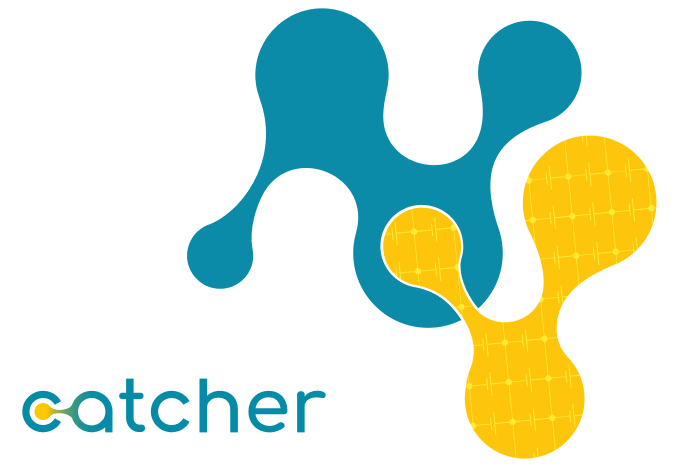ABOUT

Project facts
Project name: Creation of innovative "humidity to electricity" renewable energy conversion technology towards sustainable energy challenge
Project acronym: CATCHER
Call: HORIZON-EIC-2021-PATHFINDEROPEN-01
Topic: HORIZON-EIC-2021-PATHFINDEROPEN-01-01
Type of action: HORIZON EIC Grants
CATCHER’S science-towards-technology breakthrough
Our ambition is the practical application of the phenomena to capture the energy from atmospheric humidity, i.e. use of energy of water vapor adsorption from the air on advanced nanomaterials surface for electrical energy generation.
Our “humidity-to-electricity” converter device combines at the micro-level a sequence-chain of physicochemical, physical, and electrophysical processes that take place on the interface of nanostructured oxide materials when interacting with water molecules from the surrounding atmosphere, thus enabling direct humidity adsorption – electrical energy conversion.
CATCHER enhances power production by improving the adsorption capacity towards humidity and conversion efficiency through the polarization of the converter’s functional layer by an internal electric field.
Such panels can be integrated into every modern energy infrastructure of regions with an appropriate climate. For optimal use of outdoor thermodynamic conditions, a combined design (planar and porous block conversion elements) is designed. By means of electrical adapters, this system can be combined with elements of modern energy infrastructure, capable of operating in an autonomous mode, without recharging and maintenance.


Project impact
The project brings innovation to harness the planet’s abundant natural resource – atmospheric humidity – in a way that can sustain society’s needs. CATCHER will significantly advance the innovative concept of “atmospheric humidity to electricity” direct conversion via fundamental knowledge advancement; proof of technological feasibility of the concept-driven R&D and demonstration of its sustainable benefits.
The CATCHER will contribute by S&T advances in four of the total six EU Key Enabling Technologies: Micro-and Nanoelectronics, Nanotechnology, Advanced Materials, and Advanced Manufacturing Technologies. CATCHER‘s contribution is in the fields of solid-state physics and nano-electronics, chemistry and surface science, and electro-physics and nanoengineering.
CATCHER has a high positive societal and economic impact. The CATCHER’s “deep-tech” supports Europe’s economic growth and job creation driven by innovation. By 2050 is expected around 2800 billion EUR investments in the renewable energy sector, bringing 6.1 million people to workplaces, from the current 2.7 million. Through CATCHER, the EU will fortify the EU Renewable Energy market by trailblazing a disruptive new product capable of supplementing current technologies and solving significant energy efficiency challenges.
The application of the CATCHER technology and its impact can be efficiently maximized because of its modularity. It can be adapted to a variety of appliances ranging from a large-scale energy production plant to a household or a non-profit organization in tropical and sub-tropical countries – in all environments where humidity and steam are produced via heating or cooling systems.
Project Structure
Task 1.1. Development and Optimization of the Innovative nano-structured Active Coating of the “humidity to electricity” converter
Task 1.2. Development and Optimization of the Innovative nano-structured humidity to electricity converter Functional Porous Block “Quantum Diode” structure
Task 1.3 Development and Optimization of Functional absorber layer
Task 1.4 Prototype elaboration. Optimization of design features
Task 1.1. Development and Optimization of the Innovative nano-structured Active Coating of the “humidity to electricity” converter
Task 1.2. Development and Optimization of the Innovative nano-structured humidity to electricity converter Functional Porous Block “Quantum Diode” structure
Task 1.3 Development and Optimization of Functional absorber layer
Task 1.4 Prototype elaboration. Optimization of design features
Task 3.1 Prototypes testing in accordance with EU Standards
Task 3.2 Validation tests of the Working cycle of the elaborated device
Task 3.3 New Product Development (NPD) roadmap
Task 3.4 Framework to assess the technological feasibility evaluation of the alternative technological pathways, to increase conceptual & operation robustness of the technology
Task 3.5 Customer Value Chain Analysis to identify potential synergy with other industrial sectors.
Task 4.1 Elaboration of the techno-economic information to analyze and establish the viability of the “humidity to electricity” conversion process developed.
Task 4.2 Environmental and Social Life Cycle Assessment
Task 4.3 Assessment of the expected benefits, costs, and risks of the alternative technological R&D pathways across the multiple economic, social, and environmental criteria
Task 4.4 Evaluating sustainability of the elaborated technology using Life Cycle Sustainability Assessment (LCSA)
Task 4.5 Risk scenario analysis for the design, development, and launch of the “humidity to electricity” solution
Task 5.1 Launching a project website
Task 5.2 Creating a communication and dissemination plan
Task 5.3 Creating an Exploitation and application strategy
Task 5.4: Innovation Management and business opportunities identification
Task 6.1 Project Management Plan
Task 6.2. Consortium meetings
Task 6.3 Reporting the project’s progress.
Deliverables
D2.2. Protocol on Morphological and Electrical Properties of YSZ- -based prototypes
D4.2 Report on Environment and Social Assessment
D4.3 Report on Integrated Multicriteria Analysis and Risk Assessment
D4.4 Life Cycle Sustainability Assessment (LCSA)
D5.1 Project website and logo
D5.2 Dissemination and Communication Plan
D6.1 Data Management Plan (DMP)
D6.2 RPX update of the Data Management Plan
D6.3 Update of the Data Management Plan
D6.7 Project Conference